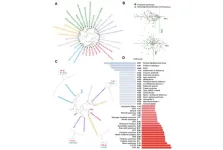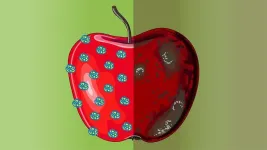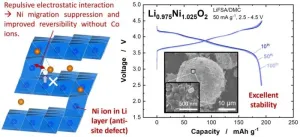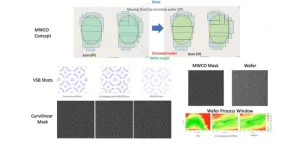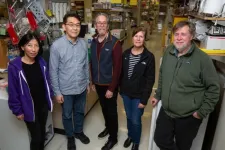(Press-News.org) Hepatoblastoma (HB) is the most common liver cancer in children. Researchers and physicians in the field are concerned because in the last decade HB has been rising rapidly worldwide and has seen the most rapid increase among all pediatric solid tumors.
A team led by researchers at Baylor College of Medicine has been working on improving therapies for this devastating disease. They recently reported in the Journal of Hepatology a novel treatment strategy that produced encouraging results in animal models.
“High-risk disease leads to high rates of relapse and mortality,” said first author Dr. Andrés F. Espinoza, general surgery resident in Baylor’s Michael E. DeBakey Department of Surgery.
“In this study, we investigated the potential benefits of a new combination therapy that included an inhibitor of the enzyme histone deacetylase (HDAC) present at elevated levels in HB cells,” Espinoza said. “Previous studies have suggested that HDAC inhibitors may provide treatment options for HB, but there is no published preclinical data on such therapies.”
To assess the effects of the novel combination therapy, the researchers developed a preclinical testing pipeline with clinically relevant HB models.
Identifying an effective new combination therapy
First, the researchers tested several HDAC inhibitors on their ability to kill patient-derived HB cell lines grown in the lab. They found that HDAC inhibitor panobinostat was the most effective at eliminating cancer cells.
The team then tested whether adding panobinostat to current chemotherapy regimens would improve tumor response. They screened these treatments in patient-derived spheroids, spherical cellular aggregates derived from human tumor samples. Their results show that adding panobinostat to the combination treatment including vincristine and irinotecan eliminated more tumor cells than any of the other combinations.
Finally, they tested the new combination therapy of vincristine, irinotecan and panobinostat (VIP) in four aggressive animal models of HB the researchers had derived from high-risk, relapsed and treatment refractory HBs. The molecular characterization of these tumors in the animal models showed that they conserved all mutations found in the human tumors of origin as well as other molecular markers present in patient tumor samples. This indicated that the tumors in the animal models closely matched those in the patients. Importantly, in contrast to other studies that tested treatments on small-sized tumors, this study tested VIP in large tumors.
“After just one week of therapy, the tumors that were treated with VIP had a significant decrease in volume and alpha fetoprotein levels, the tumor marker,” said corresponding author Dr. Sanjeev A. Vasudevan, associate professor of surgery at Baylor. “These findings are very encouraging as they suggest that VIP therapy may be a promising and effective option for patients with currently untreatable high-risk, relapsed or refractory HB.”
Other contributors to this work include: Roma H. Patel, Kalyani R. Patel, Andrew A. Badachhape, Richard Whitlock, Rohit K. Srivastava, Saiabhiroop R. Govindu, Ashley Duong, Abhishek Kona, Pavan Kureti, Bryan Armbruster, Dina Kats, Ramakrishnan R. Srinivasan, Lacey E. Dobrolecki, Xinjian Yu, Mohammad J. Najaf Panah, Barry Zorman, Stephen F. Sarabia, Martin Urbicain, Angela Major, Karl-Dimiter Bissig, Charles Keller, Michael T. Lewis, Andras Heczey, Pavel Sumazin, Dolores H. López-Terrada and Sarah E. Woodfield.
The authors are affiliated with Baylor College of Medicine, Texas Children’s Hospital, Children’s Cancer Therapy Development Institute at Beaverton or Duke University.
This work was supported by a U.S. Department of Defense Career Development Award (W81XWH-21-1-0396 /CD201061), a Baylor College of Medicine Michael E. DeBakey Department of Surgery Faculty Research Award, a Macy Easom Cancer Research Foundation Grant, a Cancer Prevention and Research Institute of Texas (CPRIT) Multi-Investigator Research Award (RP180674), a P30 Cancer Center Support Grant NCI-CA125123, a CPRIT Core Facilities Support Grant RP220646 and an NIH Ruth L. Kirschstein National Research Service Award Individual Postdoctoral Fellowship (1F32CA278313-01).
###
END
Novel combination therapy offers promising results for treatment-refractory hepatoblastoma
2024-02-21
ELSE PRESS RELEASES FROM THIS DATE:
New study: Defining the progeria phenome
2024-02-21
“In sum, we have defined what a premature aging disease is and developed tools to allow diagnostics of patients and disease population.”
BUFFALO, NY- February 20, 2024 – A new research paper was published in Aging (listed by MEDLINE/PubMed as "Aging (Albany NY)" and "Aging-US" by Web of Science) Volume 16, Issue 3, entitled, “Defining the progeria phenome.”
Progeroid disorders are a heterogenous group of rare and complex hereditary syndromes presenting with pleiotropic phenotypes associated with normal aging. Due to the ...
Low oxygen in lakes may breathe new life into conservation efforts for water quality
2024-02-21
Abigail Lewis traveled all across the United States for college and graduate school, and she ended up researching lakes in her own hometown.
For one of her graduate research projects, Lewis analyzed 656 lakes across five continents with an international research team. The lakes in her hometown of Waukesha, Wisconsin, were among those included.
“To look back and pull together these two parts of my life has been really satisfying,” said Lewis, who will earn her Ph.D. in biological sciences this spring.
In a paper recently published in Global Change Biology, ...
Engineering a coating for disease-free produce
2024-02-21
Dr. Mustafa Akbulut, professor of chemical engineering, has teamed up with horticultural science professor Luis Cisneros-Zevallos to engineer longer-lasting, bacteria-free produce.
According to Akbulut’s recent publication in Current Research in Food Science, the global fruit and vegetable market loses over 50% of agricultural fruit production during various stages of produce handling and post-harvest treatments.
Many fruits and vegetables already have a layer of food-grade wax that is applied for cosmetic reasons and to prevent water loss. Akbulut’s research combines such wax with nano-encapsulated cinnamon-bark ...
Ochsner Children’s Hospital advocates to close the gap in pediatric heart care
2024-02-21
NEW ORLEANS, LA - Ochsner Children's Hospital, ranked among the top hospitals in the nation for pediatric cardiology and congenital heart surgery, is raising awareness of the need for more pediatric-specific heart devices. As the only pediatric heart transplant program in Louisiana and the only program in the state to offer advanced mechanical support options for pediatric cardiology patients, Ochsner Children’s Hospital is committed to advocating for additional medical devices to enhance its high-quality care to pediatric patients ...
Cobalt-free electrodes achieved with nickel ions
2024-02-20
Many electric vehicles are powered by lithium-ion batteries that rely on cobalt — a scarce, expensive metal with high environmental and social costs. A team of researchers from Japanese and French universities have now developed a practical nickel-based electrode material that opens new avenues to cobalt-free batteries for electric vehicles.
The researchers detailed their findings in a study published on Jan. 15 in the journal Energy Storage Materials.
“There is an undeniable need for cobalt-free, high-energy electrode materials for lithium-ion ...
Throwing lithography a curve
2024-02-20
At the heart of advancing semiconductor chip technology lies a critical challenge: creating smaller, more efficient electronic components. This challenge is particularly evident in the field of lithography, the process used to create intricate patterns on semiconductor materials (called wafers) for the production of chips. Lithography uses a kind of template, called a photomask — or just mask — for creating patterns on semiconductor wafers. The industry is always looking for methods that improve resolution and manufacturability for both masks and ...
St. Jude taps health care start-up veteran as first Senior Vice President of Tech Commercialization
2024-02-20
(MEMPHIS, Tenn., February 20, 2024) St. Jude Children’s Research Hospital has appointed Lisa Jordan, MS, MBA, as the institution’s first-ever Senior Vice President of Technology Commercialization to lead industry partnerships and the commercialization of innovations. Jordan will work with researchers to bring a greater number of new technologies, innovations and scientific breakthroughs to the clinic, enabling breakthroughs from St. Jude laboratories to benefit more patients.
The move, part of the institution’s 2022-2027 ...
Microplastics in every human placenta, new UNM Health Sciences research discovers
2024-02-20
A flurry of recent studies has found that microplastics are present in virtually everything we consume, from bottled water to meat and plant-based food. Now, University of New Mexico Health Sciences researchers have used a new analytical tool to measure the microplastics present in human placentas.
In a study published February 17 in the journal Toxicological Sciences, a team led by Matthew Campen, PhD, Regents’ Professor in the UNM Department of Pharmaceutical Sciences, reported finding microplastics in all 62 of the placenta samples tested, with concentrations ranging from 6.5 to 790 micrograms ...
Examining a century of change in a New York City urban forest
2024-02-20
There haven’t been many long-term studies on urban forests, but data collected from the Thain Family Forest, which the New York Botanical Garden (NYBG) has been stewarding for more than a century, has provided an opportunity for scientists from The Forest School at YSE to study a century of changes of its composition.
Using inventory data from 1937-2021, Eliot Nagele ’21 MF, who initiated the research while a forester at Thain and a student at YSE, documented changes in forest structure, diversity, and composition to assess the health of the forest over time. ...
Salk scientists discover new target for reversible, non-hormonal male birth control
2024-02-20
LA JOLLA (February 20, 2024)—Surveys show most men in the United States are interested in using male contraceptives, yet their options remain limited to unreliable condoms or invasive vasectomies. Recent attempts to develop drugs that block sperm production, maturation, or fertilization have had limited success, providing incomplete protection or severe side effects. New approaches to male contraception are needed, but because sperm development is so complex, researchers have struggled to identify parts of the process that can be safely and effectively tinkered ...
